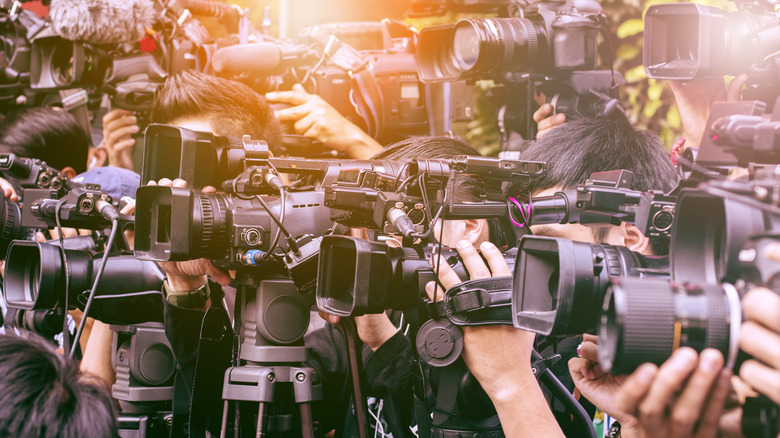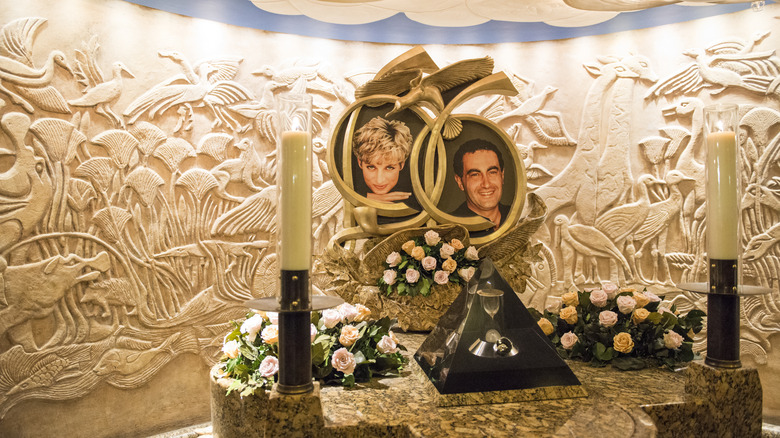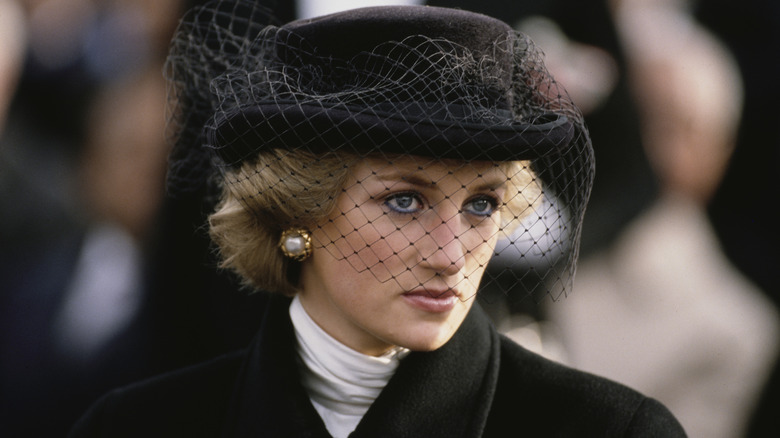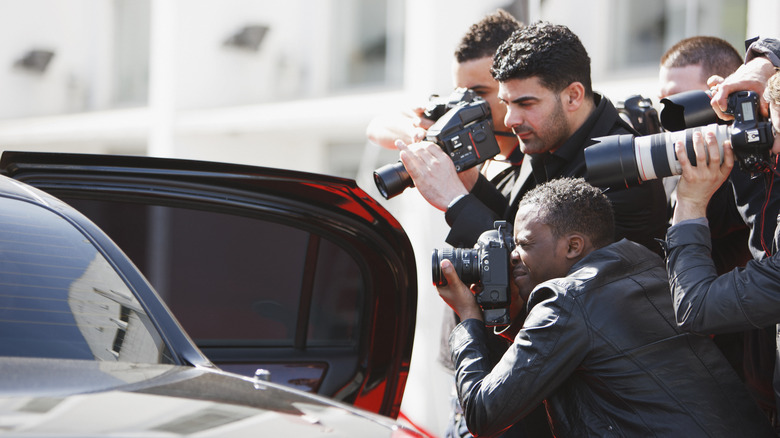What Happened To The Paparazzi Who Chased Diana?
The seemingly eternal struggle between public figures and paparazzi reached a horrific crescendo on August 31, 1997 (via USA Today). Princess Diana, someone who was very much in the public eye, given her recent and controversial departure from the British royal family, had just arrived in France with her partner, Dodi Fayed. The two were traveling home when their car crashed in Paris, fatally injuring all occupants of the vehicle, except the couple's bodyguard.
The lead-up to the tragedy has been the subject of an enormous amount of skepticism and several conspiracy theories. The official explanation per French authorities is that the driver — Henri Paul — was intoxicated, driving well above the speed limit to evade pursuing paparazzi when he lost control of the car (via Parade). Yet while his blood alcohol level was found to be three times the legal limit to drive, Spyscape claims that some experts have cast doubt on the results, suggesting the tests were not administered properly.
Nevertheless, the photographers proceeded to snap pictures of the tragedy, even though witnesses stated that Diana was (arguably, as this claim may have been a tactic to shift blame) still alive (via Reuters). In the following days they realized that the law was not blind to their inaction, and they were ultimately hit with a slap on the wrist.
The convicted photographers only lost some pocket change
According to The Guardian, 10 photographers present at the crash were arrested by French authorities. As the couple had found themselves stalked by many of same individuals since they landed in France (the car they were in having been one they switched to, in the hopes of tricking the press), it was argued that the paparazzi bore at least indirect responsibility in the deaths. However, difficulties arose after that, as none admitted to being near the car the moment it crashed.
Their defense ranged from the driver bearing sole responsibility (which was what the court eventually decided, per Los Angeles Times) to other photographers having escaped before the arrival of police — individuals who would have borne greater responsibility had they been arrested (or real). The prosecution meanwhile made optimistic claims that those most directly responsible for the crash could be identified for the jury. Nine wound up charged with manslaughter, but these charges were dropped within a few years.
Jacques Langevin, Christian Martinez, and Fabrice Chassery eventually faced invasion of privacy charges, but the three were acquitted in 2003 — the initial ruling deemed that a public highway is not considered a private region, CBS News reported. Eventually, France's highest court sent the case to an appeals court, which ultimately ruled that each of the accused pay €1 (around $1.27) to Mohamed Al-Fayed, father of Dodi Fayed (via Irish Times).
Two of the accused pointed the blame at Henri Paul
Jacques Langevin and Christian Martinez pointed the blame at Henri Paul for the accident that killed Princess Diana.
Langevin claimed that he spoke to other photographers who suggested Paul had been driving dangerously before the accident. "The Mercedes was fishtailing dangerously and the driver didn't seem to be in control," he told the Liberation daily (per MLive.com). Elsewhere, Martinez echoed these sentiments to French police (via The Guardian): "Henri Paul was going much too fast ... maybe he swerved to avoid a vehicle that was travelling very slowly in front of him. Then he lost control of the car."
According to Jean-Louis Pelletier, who represented Fabrice Chassery, the case against the photographers stemmed from Diana's high profile. He called it "a very ordinary case" and suggested that the reaction would not have been the same if Diana was not the victim (per The Washington Post).
Still, Phil Hall, former editor of News of the World, suggested that the actions of the paparazzi also played a role in Diana's death. "I felt huge responsibility for what happened and I think everyone in the media did," he said in a 2007 interview (per NBC News). He added: "But my view is that if the paparazzi hadn't been following her the car wouldn't have been speeding and, you know, the accident may never have happened."
The public turned against the paparazzi
In the aftermath of Princess Diana's death, the public perception of the paparazzi turned sour. Not only did paparazzi-friendly tabloids like the Mirror and the Sun face significant dips in their sales, but a 1997 Gallup poll found that the U.K. public deemed the paparazzi more responsible for Diana's death than Henri Paul.
As reported by TIME, Viscount Rothermere, chairman of the Daily Mail and General Trust at the time of Diana's demise, banned paparazzi photos from the publication. "I am, and always have been, an admirer of Diana, Princess of Wales, and nagged my editors to protect her so far as they could against powerful enemies," he said in a statement.
The Press Complaints Commission (PCC) also made adjustments to its Editor's Code of Practice to offer increased protections for those facing scrutiny from the press and clearly defined the difference between public and private places.



